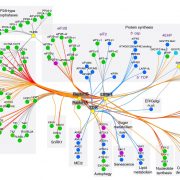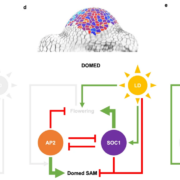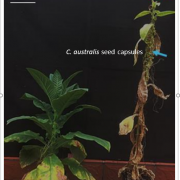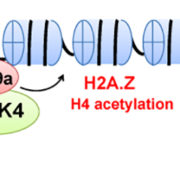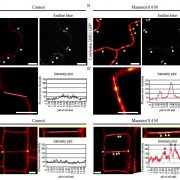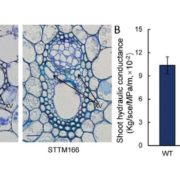Repression of photomorphogenesis by a small cell-wall-derived dark signal ($)
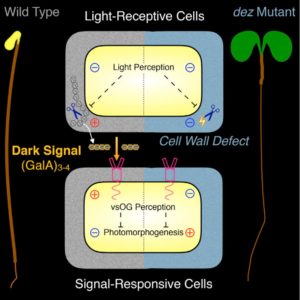 Genetic screens have revealed many key components of light signaling. In this new work, Sinclair et al. provide new insights into the repression of photomorphogenesis by cell-wall derived signals. They started with a mutant, de-etiolated by zinc (dez) that shows open cotyledons and a short hypocotyl (characteristic of photomorphogenesis) in the presence of excess zinc. They mapped the mutation to a gene involved in cell wall modification, specifically pectin acetylation (which can alter the ability of cell walls to bind cations such as Zn2+). The dez mutant phenotype is rescued by the addition of very-short oligogalacturonide; vsOG. The authors propose that in wild-type plants, an extracellular cell-wall derived vsOG signal is produced in the dark through the action of the DEZ protein which supresses photomorphogenesis. The proposed extracellular dark signal could explain the irreversibility and non-cell autonomy of photomorphogenesis. (Summary by Mary Williams) Curr. Biol. 10.1016/j.cub.2017.09.063
Genetic screens have revealed many key components of light signaling. In this new work, Sinclair et al. provide new insights into the repression of photomorphogenesis by cell-wall derived signals. They started with a mutant, de-etiolated by zinc (dez) that shows open cotyledons and a short hypocotyl (characteristic of photomorphogenesis) in the presence of excess zinc. They mapped the mutation to a gene involved in cell wall modification, specifically pectin acetylation (which can alter the ability of cell walls to bind cations such as Zn2+). The dez mutant phenotype is rescued by the addition of very-short oligogalacturonide; vsOG. The authors propose that in wild-type plants, an extracellular cell-wall derived vsOG signal is produced in the dark through the action of the DEZ protein which supresses photomorphogenesis. The proposed extracellular dark signal could explain the irreversibility and non-cell autonomy of photomorphogenesis. (Summary by Mary Williams) Curr. Biol. 10.1016/j.cub.2017.09.063


